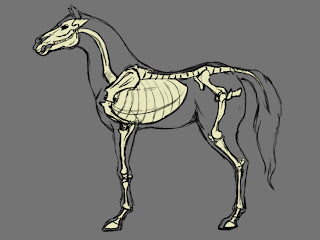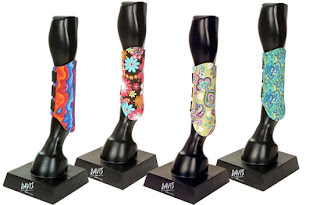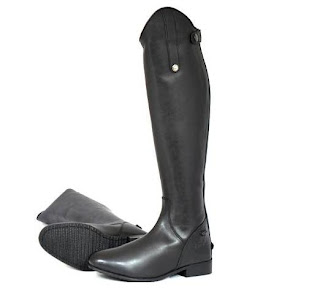 |
| Pic from http://www.yourhorse.co.uk |
Sit trotting is when a rider rides a trotting horse without posting. In other words, the rider just sits on the horse. Sounds easy, right? Nope. Not at all. When a horse trots, its back goes up and down while its diagonal pairs of legs move forwards and backwards. This makes the sitting trot a bit like sitting on a jackhammer if you can't do it properly as the horse's movement forces you to go up an down as well.
As I said before, I had a big problem with the sitting trot. At my first stable, I was taught the sitting trot very briefly, in like 10 minutes. To make things worse, I was taught WRONG. When you sit trot, you're supposed to relax and let your back and ankles absorb the horse's motion. Instead, I was taught to cling with my legs to keep me on. I looked horrible doing it, I had no control over the horse, my feet kept coming out of my stirrups, and whenever I rode sensitive horses they would go faster and faster as they responded to my unintentional leg aids, making it even harder for me to stay on.
It was only when I moved to my new stable that I realised it was wrong. I was put in the experienced lesson, which suited me fine, except whenever we were required to sit trot, I would bounce around like an idiot, causing people to stare at me and making myself embarrassed.
I've overcome my problem now by doing the following things:
- RELAXING and BREATHING. This is actually a lot harder than it sounds. If you concentrate too much or over anticipate the sit trot, you'll tense up, causing you to bounce even more. So really- just calm down and don't think about it too much- just sit.
- Putting weight into your feet and sitting deep. Doing this sort of anchors you down into the saddle and helps you keep your seat.
- Sitting on your seat bones- think of it as sitting on the back pocket of your jeans.
- Leaning back slightly. I know your instructors all tell you about your line of balance and how you should have a straight line from your ear-shoulder-hip-heel, but it actually helps me sit better by leaning back.
- Try and absorb the motion with your heels and your back. Riders with a very good sit trot don't move their but at all- instead they move their back to absorb the movement.
- Riding stirrup-less- it helps improve your balance and seat
- Put a napkin on the saddle and sit on it. If you bounce, the napkin will blow away as there is no weight to keep it down. Sit trot for 15 minutes straight. Every time the napkin blows away, tell yourself you have to do ten pushups. This will help motivate you to keep your but down.
- Take some lunge lessons so you don't have to concentrate on steering the horse. Instead concentrate on your seat- concentrate on doing all the things I said above.
Good luck, guys. I hope your journey to learning the sit trot is easier than mine!



















































